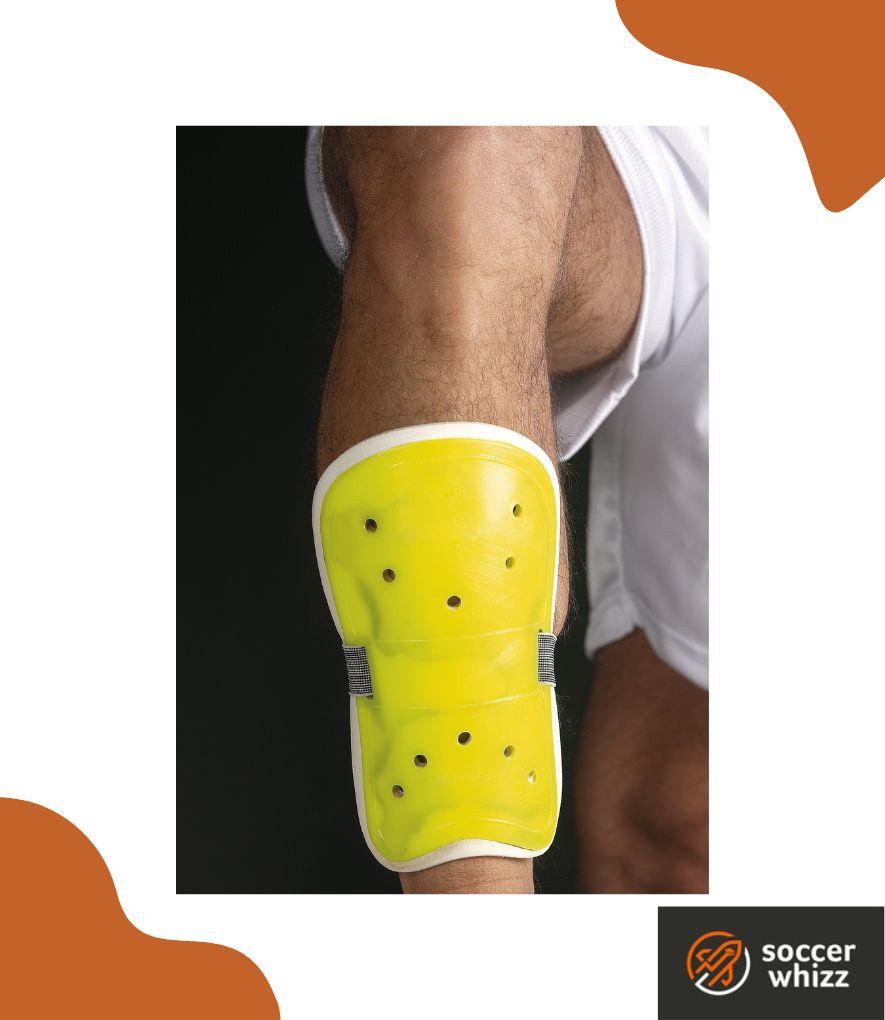Soccer players performing at the highest levels of the sport are usually fully equipped when it comes to the gear that they wear on the field.
You see them run out with shorts and an accompanying jersey that has their surname printed on the back of it, not to mention the expensive soccer cleats used to strike the soccer ball with power and accuracy.
But that’s not all.
These athletes also put on socks that are specifically designed to handle the rigors of competitive play.
We’re talking about those knee-high soccer socks that you often see them wearing.
This article is going to take a detailed look at why these socks are designed to be thick, especially because the answer may not seem obvious to people watching matches on television.
So, let’s get started with a brief summary.
Soccer socks are made thick to keep a player’s legs warm whilst they compete. In addition to this, the thickness of these socks helps to secure the shin guards firmly in place, as the shin guards are usually placed underneath the socks for protection during play.
Read on for a deeper explanation of the aforementioned point.
Reasons why soccer players wear thick socks
There are quite a few rationales behind soccer socks having a particularly chunky feel to them.
We shall now cover each one of them in turn.
First up, we have…
1. Leg warmth
If you’ve ever been inside a soccer stadium at any point in your life, then you’ll know exactly how cold these grounds can get, particularly in the winter months.
Personally, I used to work as a steward for Bradford City’s soccer team.

And let me tell you.
The cold was frightening, especially during evening games.
I usually doubled up on socks, because one pair wasn’t sufficient to prevent my legs from freezing whilst I worked there.
Therefore, it makes sense that the soccer socks that professional players wear are equipped to offer warmth and comfort that these athletes need.

After all, the clubs that supply these players with kits and other soccer attire want the players representing them to perform at their very best.
The fabric of soccer socks is generally a couple of millimeters thicker than your all-purpose socks that you wear on a casual summer’s day.
By designing the socks in this way, the legs of players remain warm regardless of the weather conditions, as the fabric material offers enough insulation to keep the cold at bay.
2. Securing shin guards in place
Additionally, soccer socks are made thick in order to keep the shin guards well fitted as they rest on top of the legs.

Shin guards are a compulsory piece of soccer gear according to the Football Association’s rules on player equipment.
More so, they must be:
- Covered entirely by the socks;
- Made of a suitable material like rubber or plastic; and
- Able to provide a reasonable level of protection from injury
If soccer socks were thin, they would arguably prevent shin guards from giving players the protection that they were built for.
Thin soccer socks would be more susceptible to wear and tear, and if the socks you were wearing happened to rip up or pull apart as you played, then the slip-in shin guards would simply fall out.
3. Leg protection
Finally, thicker soccer socks afford players more leg protection as they compete on grass or artificial turf.
Have you ever fallen to ground on one of these surfaces and bruised your leg in the process?

Well, this can easily happen if you decide to play with some low-cut or crew length socks.
Soccer socks are made thick for the very purpose of giving players an extra layer of safety against the bruises and abrasions that come with playing the game at a competitive level.

Believe it or not, those sliding tackles can really leave you with scratches and wounds on the lower parts of your legs.
With the fabric as thick as it is, soccer socks are able to safeguard players from such discomforts as the material acts as a protective barrier.
Should soccer socks be thick?
The soccer socks that you decide to wear should have a bit of thickness to them.
If they don’t meet this criteria, then you shouldn’t expect them to offer the benefits that have been outlined so far in the article.
However, there is such a thing as your soccer socks being too thick.
Excessive thickness of the socks can cause discomfort.
More specifically, fitting your legs nicely into soccer cleats could pose a challenge.
This is because the extra thickness may lead to shoe tightness, which would make running and striking the soccer ball a lot more difficult than it ultimately should be.
You also wouldn’t want your socks too thick as this can lead to the numbing of your toes as well as blistering.
So, strive for a balance when it comes to the thickness of your soccer socks.
You want them thick enough to give you protection and warmth as you play, but not overly thick that they cause discomfort for different parts of your legs and feet.
Is it better to wear thin or thick socks for soccer?
The answer to this question will largely depend on your own personal preference.
If it was up to me, I’d opt to wear thin soccer socks during the spring and summer months.
And then for those chilly and blustery winters, I’d make sure I have a couple of very thick pairs to provide the necessary insulation for the cold season.
Conclusion
You should now know why soccer socks are so thick.
The benefits of leg warmth and protection, as well as ensuring that shin guards fit correctly are major reasons why manufacturers design them in this way.
If you’ve enjoyed reading this short blog post, then take a look at some related topics covered on the blog.
This includes:
- Our product roundup on the best Adidas soccer socks;
- The finest soccer socks to buy in 2023;
- Materials used to make soccer socks;
- The reasons why soccer socks are tight;
- Whether soccer socks and compression socks are the same;
- Which soccer socks professional players wear;
- How to wear soccer socks correctly; and
- The process for cutting soccer socks from start to finish
If you enjoy the content that I create and would like to buy me a coffee, then I’d really appreciate it!
Any money that I earn through this donation will be re-invested into more content for this website.
Additionally, by sending in a donation you’ll also receive a copy of my recently released 190+ page eBook on Soccer Ball Care, as well as be subscribed to our mailing list where you’ll be regularly informed on the latest developments concerning the Soccer Whizz blog.
- Future Icons: Europe’s Emerging Midfield Maestros Set for Glory - December 4, 2023
- Kickstarting a Revolution: How Soccer Transformed the United States Over the Last Four Years - October 7, 2023
- 4-1-4-1 Soccer Formation [Analysis] - September 23, 2023

